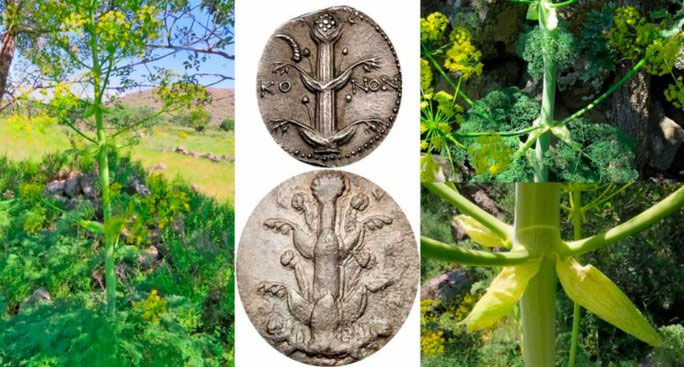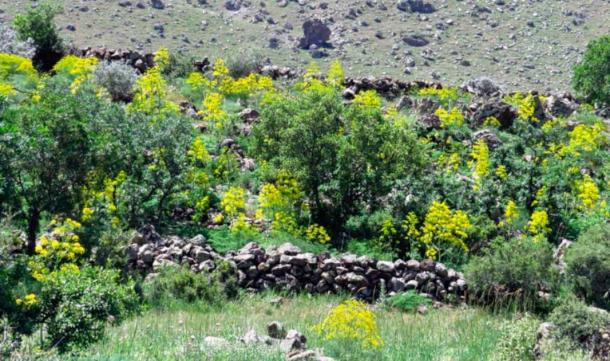'Miracle sex drug' revived after 2,000 years of extinction, surprising effects
An extinct plant, described in ancient Egyptian, Greek and Roman literature as a sexual enhancer and a cure-all, has been unexpectedly revived at the foot of a volcano.
According to Ancient Origins , the plant, called silphion (scientific name Ferula drudeana, also known as lazewort or silphium ), was once sought after by the Egyptians, Greeks, and Romans. It was used to create a very valuable chewing gum, which was both an aphrodisiac and a contraceptive, and was also believed to be a cure-all.

Modern Silphion tree in Türkiye and image depicted on an artifact - (Photo: ANCIENT ORIGINS).
The silphion plant with its distinctive bright yellow flowers once grew throughout the Cyrene region of Libya some 2,500 years ago and was described in detail by the Roman chronicler Pliny the Elder, who revealed that the famous Emperor Nero consumed the last silphion plants in the world.
This highly valuable plant completely disappeared from the ancient world about 2,000 years ago.
However, recently, Professor Mahmut Miski, a botanist from Istanbul University - Turkey, announced that he had discovered a strong revival of silphion near Hasan Mountain in Central Turkey.

A population of "miracle medicine" silphion in Türkiye, the dream of many ancient merchants - (Photo: ANCIENT ORIGINS).
In a new study, scientists tested the medicinal properties of modern-day silphion plants on mice and confirmed that extracts from the plant actually enhance sexual behavior. The effects of the plant are so powerful that they say they 'fully support' the ancient claims about the miracle drug.
As such, this plant has become one of the world's oldest remedies for treating sexual dysfunction.
According to an article by Professor Miski's team published in National Geographic, in addition to its sexual enhancement applications, silphion was also used by ancient Greek medicine gods to treat stomach aches or warts. In Roman times, it was used as a spice in some dishes.
Silphion plants were said to be worth as much as silver and the famous Roman Emperor Julius Caesar amassed a huge fortune through trading in the plant.
After its disappearance, many expeditions were sent to try and find a land where they hoped the silphion might still lurk, but to no avail.
But nearly 2,000 years later, in 1983, Professor Miski was walking at the foot of Mount Hasan, an active volcano in the Cappadocia region of central Türkiye, when he suddenly saw a carpet of yellow flowers. But it was not until two decades later that he realized it was very similar to the description of the ancient silphion and sought to study and prove this spectacular revival.
- Predict the side effects of pharmaceuticals
- What is 'seawater' drug?
- Finding the 'miracle drug' to reverse aging is surprisingly simple
- Overview of ARV drugs and their effects on HIV treatment
- What will the world be like if dinosaurs and mammoths revive?
- The elixir 'revived' the person who died from drug shock
- Frozen frogs ... revived
- Japan has just revived a frozen creature after 30 years
- The era of dinosaurs can be revived
- Cancer patients will no longer suffer side effects thanks to new research
- Many types of drug interactions can be very dangerous
- Who are could not use adpirin?
 Why do potatoes have eyes?
Why do potatoes have eyes? 'Tragedy' the world's largest carnivorous life: Death becomes ... public toilet
'Tragedy' the world's largest carnivorous life: Death becomes ... public toilet Tomatoes were once considered 'poisonous' for 200 years
Tomatoes were once considered 'poisonous' for 200 years Detecting microscopic parasites on human face
Detecting microscopic parasites on human face